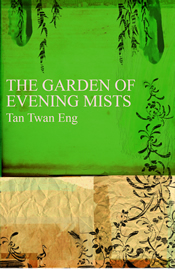Thoughts on Knots
by Keith Geekie, Professor of English
A few weeks ago, I agreed to bring home a very large box of costume jewelry that had belonged to my sister, who passed away in July. The jewelry collection was a tangled, dusty mixture of at least ninety necklaces from various decades, much of it plastic, along with assorted non-matching bracelets, a few battered antiques from the family’s past, and individual earrings, which, like socks, had strayed far from their mates.
The accumulated total must have weighed about ten pounds. The jewelry, I have since learned, has a value of practically nothing. I pretty much knew that when I brought it home. And at the time when I first had the box in my hands, I was tempted to just give the whole shebang away to Good Will. But some pieces of the jewelry had sentimental value, such as my father’s mother’s wedding ring, or my grandfather’s key chain which included a disc citing his membership in a carpenter’s union in 1906, so I dutifully brought the box home. Anything else would have seemed like a family betrayal.
While sorting through this glitzy chaos, I came across one little necklace with a thin silver chain and tiny blue, ice-cube-like beads, which caught my fancy. This strange piece, which I had never seen before, was in a tangle. From a practical standpoint, or from an aesthetic one, or from any other standpoint one might take, the necklace was worthless. But I decided to untangle it. I must have spent over an hour trying to untie the thin, tarnished chain that had been in the bottom of a dusty box, with its knots that had been knotted so many decades ago.
As I was working with tweezers, and, believe it or not, a magnifying glass, I asked myself, quite naturally, “Why am I doing this?” It was a phenomenal waste of time, and I was irritated with myself. But I then began making up reasons for my irrational behavior. I concluded at last that I wanted to see the necklace–that was suffering–become un-suffered. I wanted to free the necklace from its knots. The little chain could then become again what it was meant to be. I also felt, I’m sorry to say, that I was deeply embedded in John Locke’s Labor Theory of Value. A thing, according to Locke, has value in proportion to the amount of labor it takes to produce it. So according to Locke, the more time I wasted sitting there with my tweezers, the more value I was acquiring. I was also thinking that the necklace might have value according to the theory of proximity. What if Virginia Woolf’s infamous snail on the wall still existed? Well, it would fetch a pretty penny at a Christie’s auction, wouldn’t it–even if it is a humble snail–simply because it was in the room with Virginia, in her proximity, and was the occasion for her famous essay “A Mark on the Wall.”
So my little chain could acquire value because I was the one who untied it, and were I to rise to the pinnacle of personhood by amassing a vast and fabulous fortune or were I to win a Pulitzer Prize, the little necklace could also find its way to an auction house and command a small fortune simply because it was once in my proximity. But all of this is doubtful. My little silver chain is certainly secure in its obscurity.
In my career, I have had doubtful students. I have looked at them and wondered, “What sort of knots are you in?” A few of them may have been knotted with family conflicts, workplace exhaustion, slow hates, various addictions, past histories with lousy teachers, sloth, nefarious schemes, insecurities, untapped talent, unused creativity, and under-appreciated intelligence. Yes, these are the ties that bind. Sometimes I get out my magnifying glass and my patience, and I’ll work with a student to try in some way to slightly unwind what has been wound so tightly that it has prevented the student from learning or even from caring. Sometimes I can help, and a student may become a bit more able to be who the student was meant to be.
The labor theory of value. What are our students worth? How much time do we spend unknotting them? Or then again how much of the task in front of us is simply an issue of proximity? Are we not just a few steps away from that wonderful place, out on the broad meadows, where we won’t be gone long, and the students can come too? And perhaps, on a good day, their knots will slacken, and the students, loose-limbed at last, will join us on a summer ramble. But then again, as Pasternak says, “Life is not a walk across a field.”














